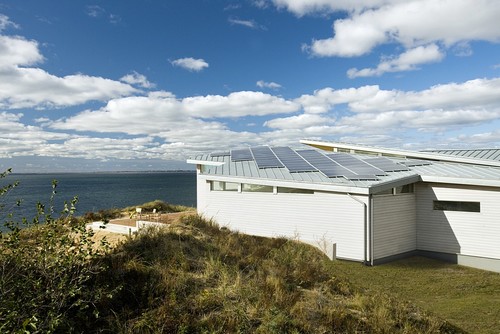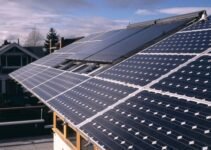Today, it is a trend to look for renewable alternative sources. There are so many reasons to do that. Every day, our activity produces carbon dioxide that is released to the Earth’s atmosphere and is the main cause of “Global Warming”.

Photo by ZeroEnergy Design – Discover exterior home design inspiration
One answer to global warming is to reduce our dependence on fossil fuels, to retrofit and replace current technologies with new, modern technologies with much better performances.
Also, the rising costs of natural gas, oil and electricity are inciting people to take in consideration alternative energy sources for heating their homes. In plus these alternative energy sources are renewable whereas fossil fuels such as coal and oil are not. Let’s name some of them: solar, wind, water and geothermal energy.
Investing in alternative energy heating you can benefit in many ways:
- Save money in energy and heating bills for years to come. At a first glance, investing in alternative energy is expensive, but you will save money in a long run.
- This improvement will increase the value of your home.
- A more efficient home not only will lower your utility, but will reduce carbon dioxide emissions (your carbon footprint), that cause climate change.
However, no matter which method of alternate heating or power you choose, they will lower your heating bill today by up to 40%.
Alternative Energy Choices
1. Geothermal Energy:
The word geothermal comes from Greek and means “Earth Heat”. To use geothermal energy is to capture this energy from certain depths in the ground where the earth remains a constant 70 degrees.
More important, these small geothermal plants have a little impact on the environment.
Not only that; Geothermal energy is a free energy system and more reliable than solar energy.
The geothermal system works in the way as a refrigerator but in reverse. In a fridge the heat is transported from inside to outside while a heat pump takes the heat from underground to the interior of the house. But not all the time; some time these systems are designed to work in reverse. In the summer they are cooling the interior of your home.
2. Solar Energy:
We can use solar power in two ways: production of electricity and heating.
One of the most popular types of solar heating is hydronic system which uses heated water.
New researches show that, millions of homes can easily be converted to capture heat from the sun.
This inexhaustible energy will be as long as Sun will exist and release no pollution.
You should know that, more than 70% of house energy goes into space and water heating so, imagine what a dramatic financial saving you can have.
There are only two disadvantages:
You can have solar energy if the sun is not shining or during the night, although new researches could change that.
The second disadvantage is solar power stations can be expensive to build, but how I mentioned above you can save money in a long run.
Roof Solar Shingles Incredible Benefits – Review and Tips (howtobuildahouseblog.com)
3. Wind Power:
Technological principle of wind turbines is to convert the wind kinetic energy into mechanical energy. Then, this mechanical energy is used to drive a generator that will transform the mechanical energy into electricity.
Now, it all depends about the wind resources to get a decent payback.
And something else; to use wind power you need a little piece of land to build the turbine which makes that difficult if you are living in a big city, but for rural and suburban areas is a good choice.
However if you cannot afford a big wind installation you can turn your attention to rooftop micro-wind systems.
4. Corn, Rye and Wheat:
You can purchase these fuels for a low price or even can be grown on your property.
What do you need?
You need only to install a furnace that will burn these fuels.
5. Hydroelectric Energy:
More than 20% of energy power is produced by water turbines. This energy comes from dammed water or tidal water driving turbines and generators.
Advantages: Generally is a constant energy and produce no pollution or waste.
Disadvantages: To build a dam is very expensive and it is needed a permanently, constantly supply of water.
6. Radiant Heat:
Radiant energy concept is revolutionary. Instead of heat the air in an environment this concept is to heat the objects.
Plastic pipes embedded in floors transport hot water that heats the floor.


